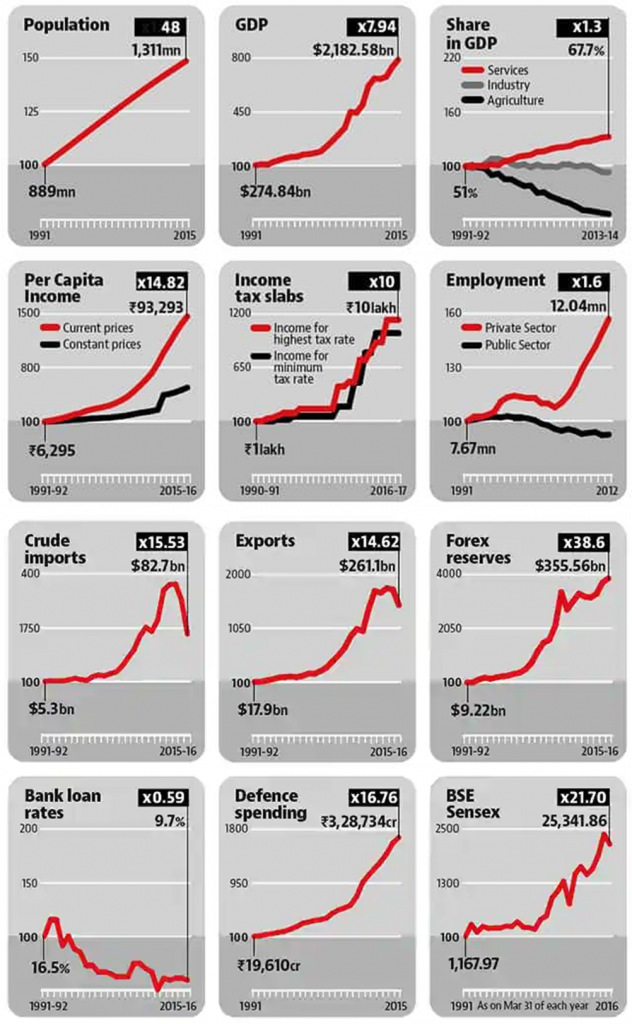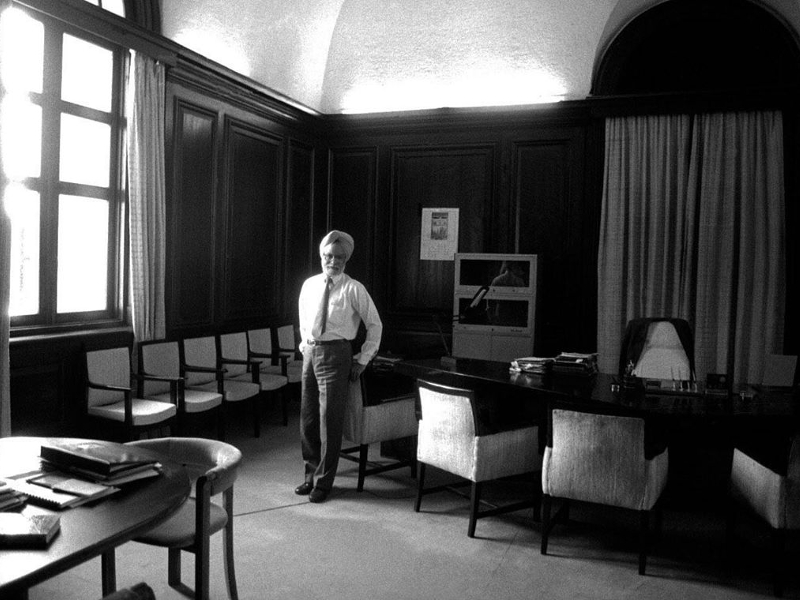By AlignIndia Editors. First Published on 03 September 2020
[Featured Image : Dr. Manmohan Singh in his North Block office after presenting the 1991 budget/INC India on Instagram]
In the history of modern India, the process of ‘Economic Liberalization’ that was put in motion by the 1991 budget presented by a Congress-led government has a pride of place. It changed how Indians saw India and how the world perceived India. Foreign investments started pouring in and sunrise sectors such as information technology and outsourcing started soaring, creating millions of direct and related jobs in the process.
The average Indian started gaining greater economic confidence that helped India in presenting a more confident posture internationally, enhancing our prestige and glory around the world. The world now sees India as an economic success story, though we do have important challenges to cover. However, the progress made cannot be denied.
In 2016, 25 years of economic liberalization since 1991, the average earning of an Indian citizen, measured in terms of per capita income, rose nearly 15 times— from Rs 6,295 to Rs 93,293. Despite adjusting for inflation, incomes leaped five-and-a-half times, reflecting strengthened spending power. July 24, 2016, marked 25 years of liberalization. Uniformly set at 100 with respect to the year 1991, Exhibit 2 captures changes in key economic markers (as depicted in a July 2016 Hindustan Times article).
The impact of 1991 liberalization

Image source: Hindustan Times
According to a July 25, 1991, editorial in The Hindu, “Dr. Manmohan Singh’s budget represents a major effort at adjustment, displaying at the same time a sensitivity to the national interest and social concerns.”
Speaking at the 25th anniversary of the National Stock Exchange (NSE) in August 2018, Dr Manmohan Singh said, “Reforms of 1991 put India on fast track to growth and helped the country emerge as a world economic leader”. The 1991 budget eliminated the Permit Raj (or the Licence Raj) and downsized import taxes.
The Licence Raj was seen as a barrier to new players, and reforms to it encouraged foreign companies to invest in India. Increase in the degree of competition between companies in the Indian market, too, helped raise productivity and boost efficiency. Thus, the industrial policy saw benefits from deregulation in the nation’s domestic sector. For instance, changes in import-export policy that reduced import licensing was a significant step.
Another significant act was the transfer of complete statutory powers to the Securities and Exchange Board of India (SEBI) in terms of regulating the affairs of the nation’s stock exchanges, while defending the rights of investors and interdicting trading malpractices. In a path breaking development, 20% of government stakes in select public sector undertakings (PSUs) were earmarked to be offered to mutual funds and investment institutions that come under the public sector. The disinvestment was to strategically broad-base the equity and to enhance the free flow of resources in these key enterprises.
A Board for Industrial and Financial Reconstruction (BIFR) was institutionalized for referring public enterprises that were chronically sick so that appropriate revival or rehabilitation schemes could be recommended. In parallel, the software industry came for special consideration and its “vast unexploited potential for growth” was noted.
To encourage software industry exports, the 1991 Budget extended a tax concession offered under Section 80HHC of the Income Tax Act that allowed assesses to deduct a portion of profits from their income while arriving at the taxable sum. It definitely helped in the growth of the industry over the following years, transforming the face of urban India in the process, while creating various jobs for those from rural backgrounds as well. It would not be far fetched to say that the 1991 budget was a true ‘India Shining’ moment that has radically changed the nature and evolution of India’s economic trajectory for the better.
By AlignIndia Editors. First Published on 03 September 2020.
(AlignIndia helps you dismantle propaganda piece-by-piece, so that Indian Democracy stays alive. The deafening din of bigotry and jingoism has made us forget Gandhi, Nehru, Patel, Shastri and scores of other leaders who built India based on the values of peace and ethics, standing up for the downtrodden and the voiceless. Our effort is aimed at reviving these core values as enshrined in the Constitution of India while fiercely protecting the diversity, which defines the idea of India.)


